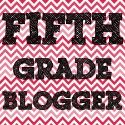It's Thursday and you know what that means?!?! Another installment of the Reading in the Wild book study. This book study hosted by Catherine, over at The Brown Bag Teacher has been awesome! It is one thing to read the book on my own, but to be able to reflect on each chapter and read what others are doing in their classrooms has been amazing! Everyone brings such a wealth of practice and knowledge each week.
This week is being hosted by two amazing teachers Molly from Lessons with Laughter and Carrie from Being-Ladylike. Make sure you head on over to their blogs to see what insight they have on this chapter.


This week we focused on the last section of Chapter 2, "Curating a Classroom Library." In the eight years of teaching boy have I collected a lot of books. I'm not joking. I have seven book shelves in my classroom library full of picture books and chapter books. Much to the dismay of my husband who gets to help me pack up and move quite a bit. Two years ago I moved from 3rd to 5th thus having to pack up and move upstairs into a new classroom. Then last year I switched to a new school and we had to pack up and move. Luckily the charter school I worked at had an elevator (I was on the third floor). However, at my new school I was on the second floor and there are no elevators. But it's for the kids! I love having such a great classroom library for my students. They love it too! Most of the books have come from using my scholastic points.
Unfortunately, I don't have access to my classroom and can't take pictures of what I have going on in regards to my classroom library. Sigh...
Donalyn Miller poses the question, "Why do we need classroom libraries? After all, most school campuses contain a school library. Doesn't it provide students with the reading material they need? (page 80) In her research, she has found that access to books in the classroom results in increased motivation and reading achievement. Having such close access to books in the classroom provides engaging and meaningful reading experiences throughout the entire school year.
Factors to Consider When Building a Classroom Library (80-81)
Your classroom library is constantly evolving...depending upon your students' interests that year, reading levels, etc. Miller discusses the importance of including a range of reading levels, genres, and topics so that everyone of your students can find a book to read. I love this comment she made "Full bookshelves don't matter much if your students won't (or can't) read the books." Isn't that the truth.
I have books that get so much use in one year, they are tattered by the end of the year! I love seeing that! Yes, it means I may need to replace the book, but it's evidence that wild reading was taking place in my classroom!
This year I plan on doing what Miller does the first day of school - a book frenzy! She allows her students to head to the library and pick a book they are interested in reading. She does this before they discuss how to use and care for the library and the books. Once they have selected their books they discuss the rules and procedures for the classroom library. I've always done the opposite. I love her take thought! It's not my library, it is our library!
How to Check Out and Return Books (82-83)
I've never had a real specific check out and return system in my classroom in order to keep track of books. It just seemed like a huge hassle and I never found the time to figure out a system. I figured if a book accidently went home and never returned it was ok...now they have a book in their home library. I've always told my students they can check out two books at a time.
Miller uses Booksources's Classroom Organzier to keep track of the books her students check out. It is free and initially may take some work depending upon how large of a library you have. But once your library books are input in the system (it does have auto fill) your students can check books out using a Netbook or iPod. The student can record the book's condition, assign a star rating, or write a quick review. All the info is saved from year to year. It also allows the teacher to print an overdue book reminder for students. Isn't this AMAZING! I am definitely going to do this!
How to Take Care of Books (83)
I also like how Miller asks her students to develop rules for taking care of the books. Such a wonderful way for the kids to take some ownership over the library. It definitely helps to build the classroom community.
How the Library is Organized (84)
I organize the classroom library by genre and I have a few bins that are based on a specific series. The charter school I worked at used Accelerated Reader (AR), so all my books are leveled according to the AR level. My current school doesn't use AR, but I still have a chart and explain the color system to my students.
Miller has the best ideas! For a couple weeks she will read a different picture book, short story, poem, or article to her students and then asks them to determine the genre of the text. As a class they create class notes on each genre and determine what types of characters, plots, and settings are commonly found in each genre. Once this is done she gives them tubs of books and has them work in groups to determine the genre of their tub using their class notes. Again, another activity to promote and encourage reading in the classroom. I will be doing this next year too!
Is Your Classroom Library MUSTIE? (pages 84-85)
Miller uses this acronym as she goes through and "cleans" up her library.
M- Misleading
U- Ugly
S- Superseded
T- Trivial
I- Irrelevant
E- Elsewhere
It is important to regularly remove books that are worn out and/or have lost reading appeal with the students.
Misleading- Check your nonfiction books and remove any that contain factually inaccurate or outdated information. This means I need to get rid of most of my solar system books.
Ugly- Remove any books that are torn, stained, or have split bindings
Superseded- Replace books that are continuously updated
Trivial- Any books that lack wide appeal shouldn't stay in your classroom library
Irrelevant- Books that were popular a few years ago, may no longer be as popular. She mentions to not eliminate quality books in good condition from your library, just reduce the number of copies you have on had to accommodate newer, more relevant titles.
Elsewhere- Older books or books not as popular will most likely be found in the school library or the public library. Therefore, you don't need to keep them on hand.
It has always been difficult for me to donate or give away books that I purchased, but I do agree with Miller in the importance of maintaining and updating our classroom library. She states, "We build our classroom libraries so students will fall in love with reading and find the right book at the right time. We cannot offer our students meaningful book access with damaged, outdated, or uninteresting materials."









No comments:
Post a Comment
I love reading your comments and I like to reply to them via email! Please make sure and check to see that you aren't a "no-reply blogger" so I can comment back to you via email. Thanks for reading my blog!